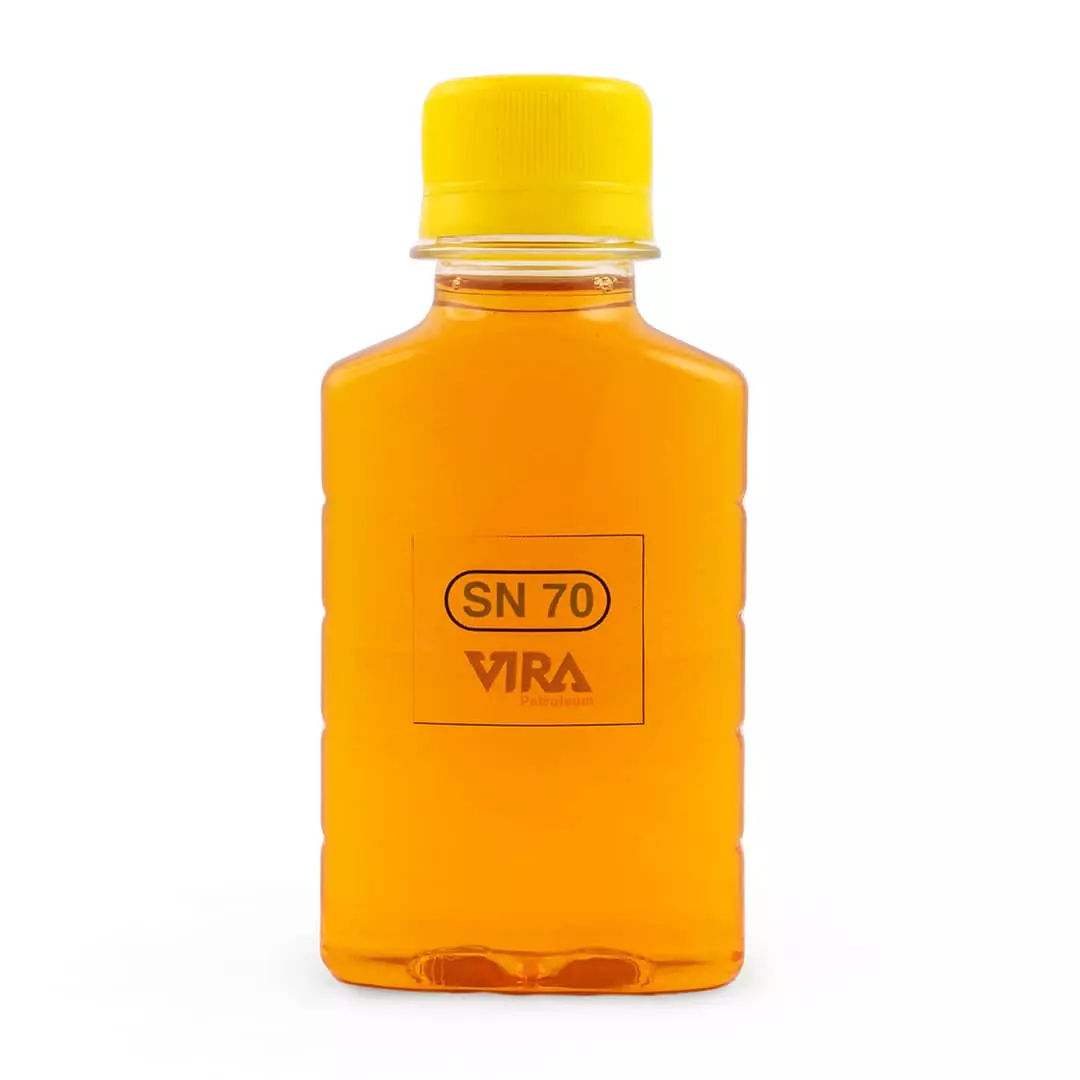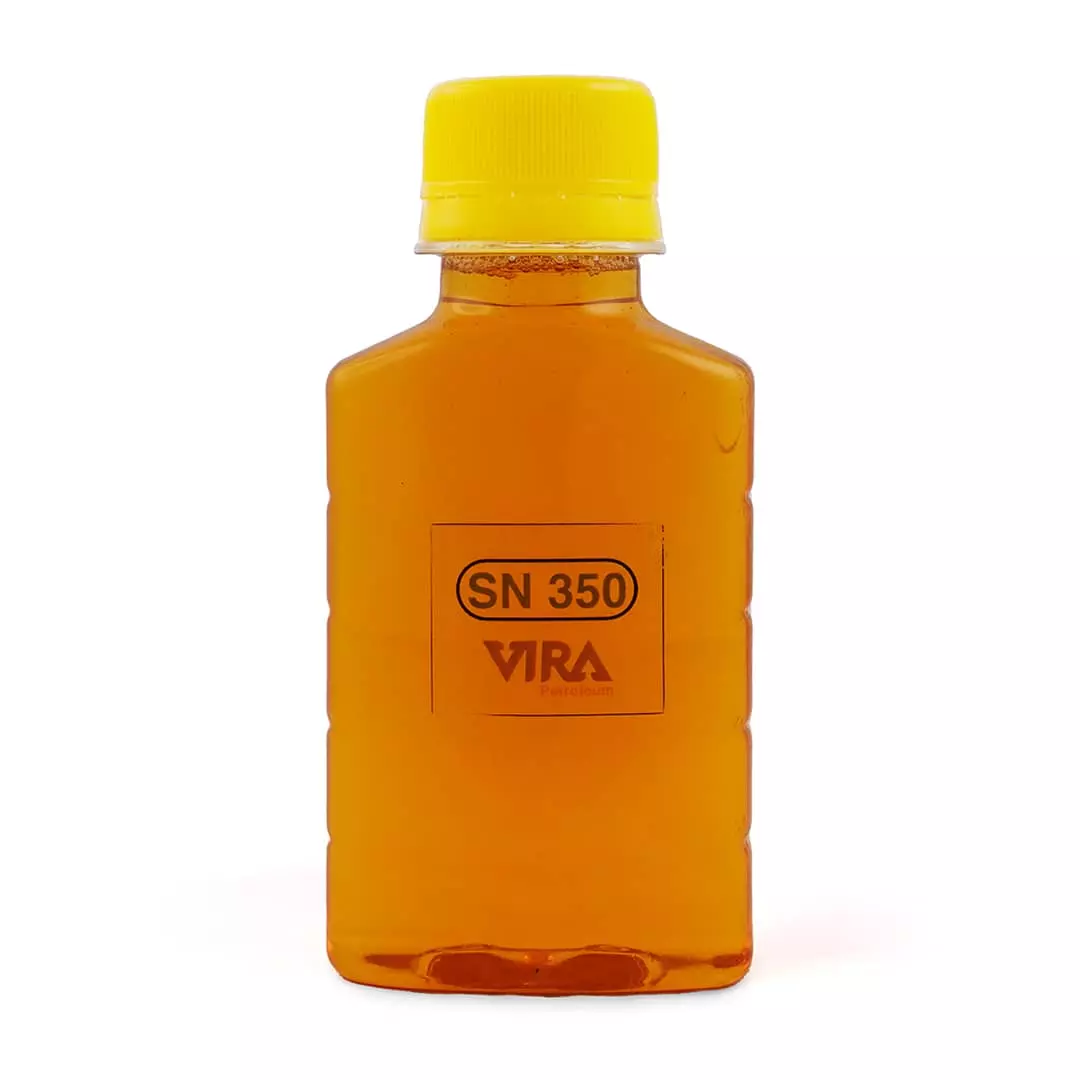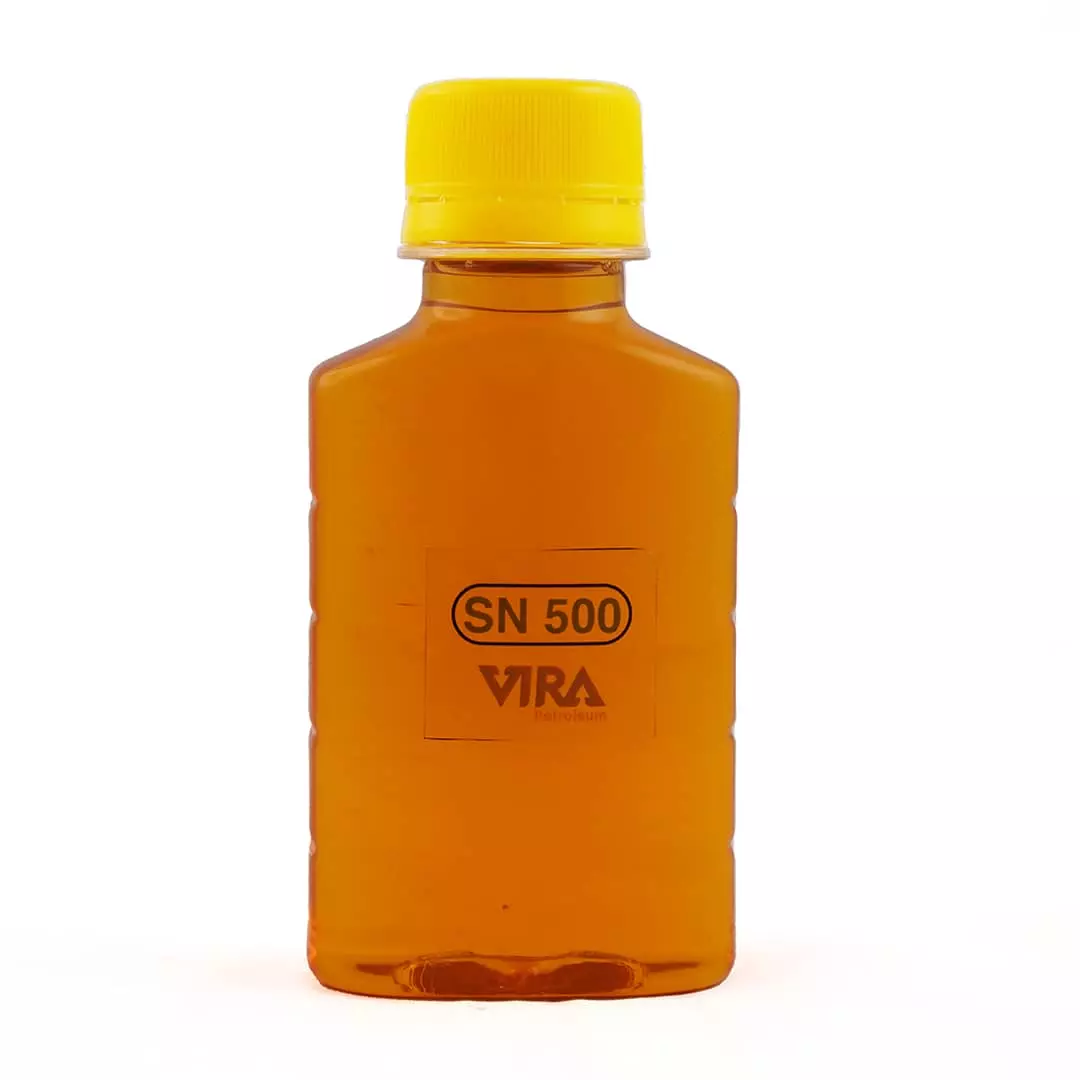Base oil SN150 Specification- Iranian Supplier
In the specifications for group 1, another type of base oil is sn150. Sn 150 base oil has multiple uses. Several products are manufactured based on the base oil sn150, such as lubricating grease, motor oil, metal processing fluids, etc. It is a Group I base oil that has been refined using solvents. Hydrogen was used to eliminate any remaining impurities to finish the refining process. It can be produced by vacuum fractionating crude oil, selecting coarse fractions, dewaxing with solvents, and hydro-refining. At different temperatures, viscosity is an important consideration.
Virgin base oil sn150
SN-150 is a Group I base oil used most commonly in producing lubricants and lubricant additives. These base oils are produced by distilling highly paraffinic crude directly or by removing vacuum residue from this type of oil with propane. When stored correctly in a sealed container and protected from water and other agents, virgin oil Sn 150 does not degrade. Although the shelf life can be determined from a commercial standpoint, the shelf life is indicated as four years from the date of manufacture.
The specifications table of Virgin base oil sn150
| Test Parameter | Unit | Test Values Min | Test Values Max | Test Method |
|---|---|---|---|---|
| Viscosity @ 100°C | cSt | 5 | 7 | ASTM D445 |
| Viscosity Index | – | 90 | 95 | ASTM D445 |
| Color | – | 1.5 | 2.5 | ASTM D1500 |
| Flash Point | °C | 200 | 210 | ASTM D92 |
| Pour Point | °C | -6 | 0 | ASTM D97 |
| Density @ 15°C | kg/m3 | 0.865 | 0.880 | ASTM D4052 |
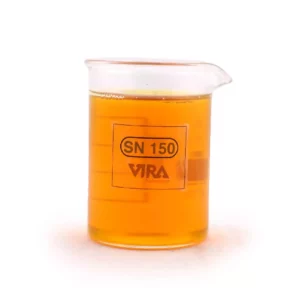
Recycled base oil sn 150
The Middle East and Asia have increasingly used Recycled base oil SN150 as the most common base oil. In addition to applications for passengers and commercial vehicles, it is also used as a key ingredient in lubricants for industrial use. A mild steel container can be stored because it is non-corrosive, stable in ambient conditions, and doesn’t corrode. Lubricating, industrial, maritime, greases, and other special applications are some of the most common applications for these base oils. Additionally, recycled oil Sn can be used as fluidifies in the production of asphalt and white oils.
The specifications table of Recycle base oil sn150
| Test Parameter | Unit | Test Values Min | Test Values Max | Test Method |
|---|---|---|---|---|
| Viscosity @ 100°C | cSt | 6 | 7.5 | ASTM D445 |
| Viscosity Index | – | 100 | 110 | ASTM D445 |
| Color | – | 1.5 | 2 | ASTM D1500 |
| Flash Point | °C | 170 | 180 | ASTM D92 |
| Pour Point | °C | -3 | 0 | ASTM D97 |
| Density @ 15°C | kg/m3 | 0.868 | 0.874 | ASTM D4052 |
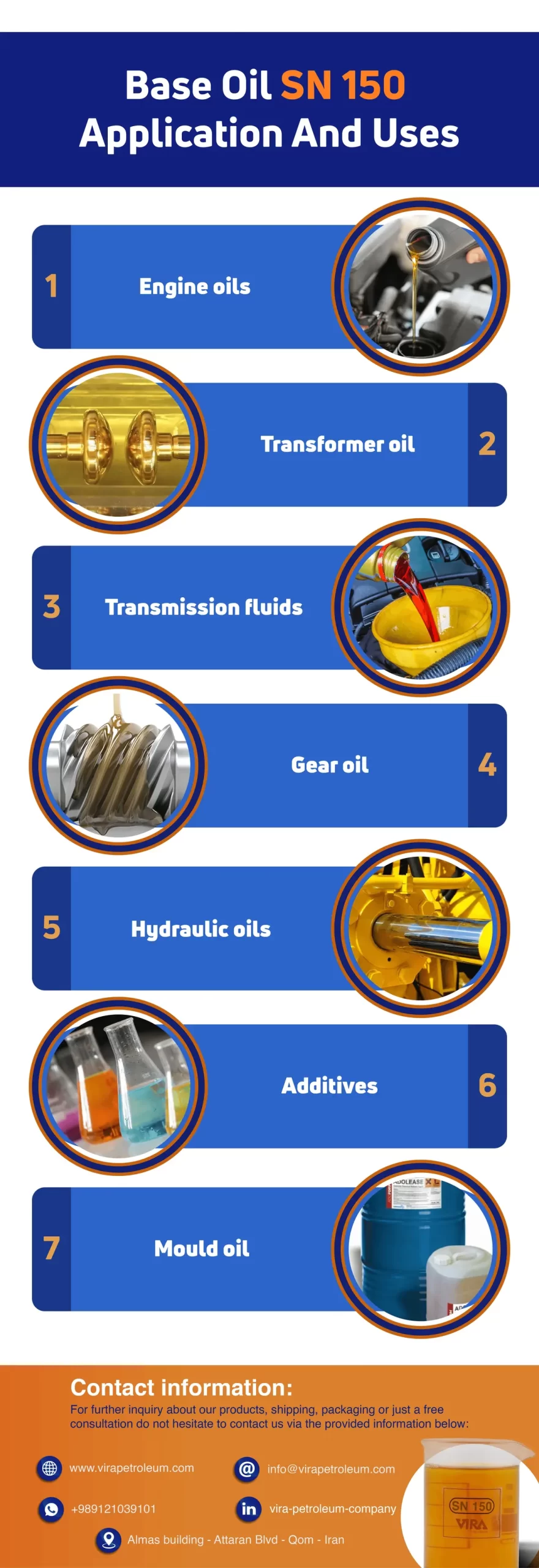
Virgin and recycled Base Oil SN 150 Application and uses
The SN 150 base oil serves as the basis for several industrial lubricants. Base oils SN 150 is suitable for use in the following products:
- Engine oils
- Transformer oil
- Transmission fluids
- Gear oil
- Hydraulic oils
- Additives
- Mould oil
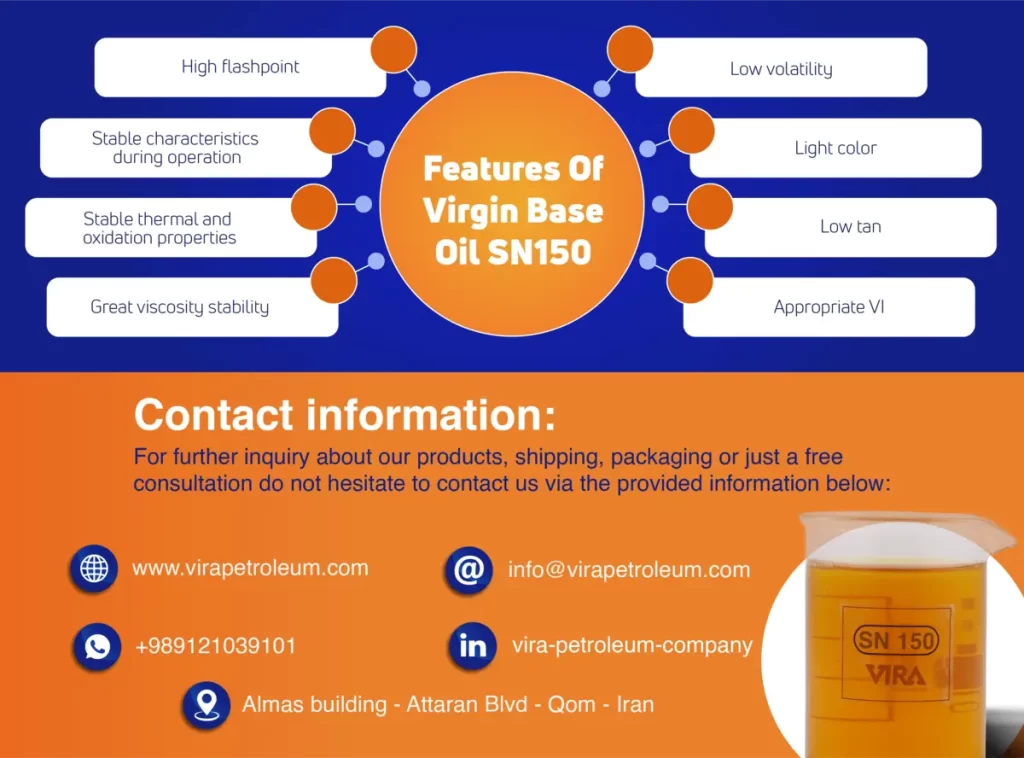
Features of sn150 base oil
Benefits of base oil Sn 150 include:
- Low volatility
- Light color
- Low tan
- Appropriate VI
- High flashpoint
- Stable characteristics during operation
- Stable thermal and oxidation properties
- Great viscosity stability
Effects of base oil sn 150 on the performance of final lubricants
Volatile property
It will stop the oil from reducing, thickening, and forming sediment.
Oxidation
It will stop the buildup of sediment, oil concentration, sludge, and metal corrosion.
Surface activity
prevents emulsion formation, air diffusion, foaming and pressure
Solvent power
Low-temperature fluidity, energy dissipation, wearer protection, and sufficient cooling are all features.
viscosity
It is fluid at low temperatures, dissipates energy, protects wearers, and provides adequate cooling.
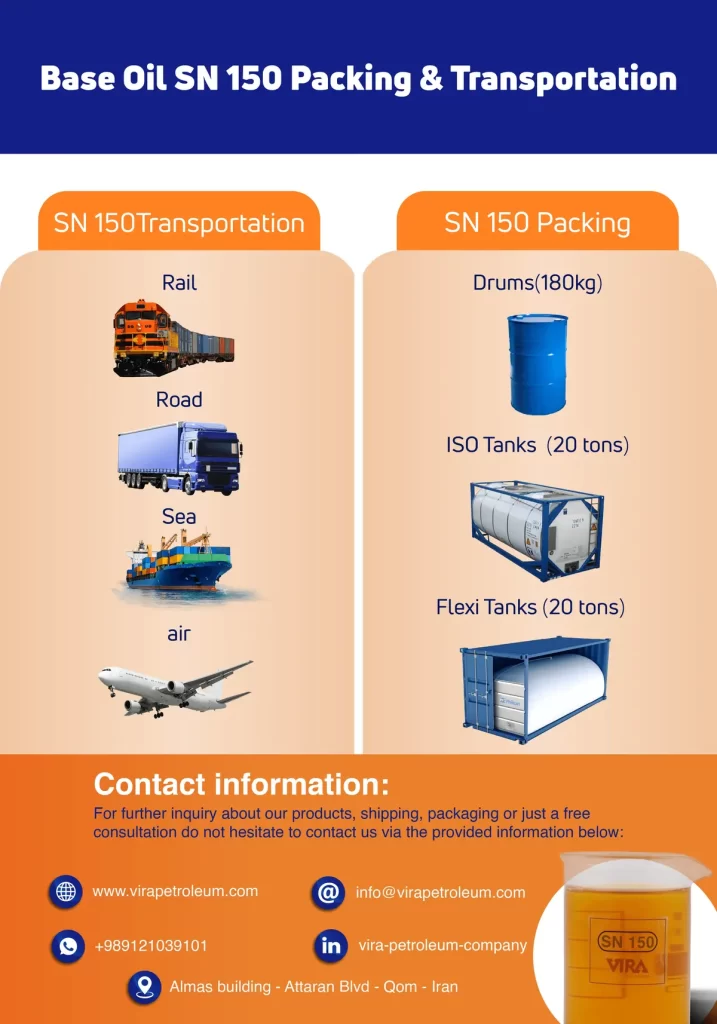
Packing Of Base Oil SN 150
virgin and recycled base oil SN 150 are packed in :
Drums (180kg)
ISO Tanks (20 tones)
Flexi Tanks (20 tones)
- Vira Petroleum provides specialized packaging upon request based on the particular requirements and standards of your business.
- Depending on your location and the required delivery time, Base Oil SN 150 can be transported via rail, road, sea, or air.
- Our top priority at Vira Petroleum is to pack and transport products in accordance with the highest possible international standards.
For a free consultation about your unique Base Oil SN 150 packing and transportation, please get in touch with our sales team using the phone numbers mentioned on the website.
Handling health & Safety base oil sn 150
Highly refined mineral oils (sn 150) with prescribed additives are used to make lubricants. This lubricant poses no specific toxic hazard under normal usage circumstances.
All lubricants, regardless of type, should be handled carefully, especially to prevent contact with the skin.
Keep away from combustible materials and avoid splashing. Keep items covered and away from potential pollution sources. Don’t pour used oil into drains, waterways, or the soil; properly dispose of it.
You should take the following actions in the event of inhalation, skin and eye contact, and s Ingestion.
Inhalation:
Remove the victim from the situation so that you don’t become a casualty. Loosen the remaining clothing and remove any contaminated items. Assume the patient’s most cozy position and maintain warmth. Keep at rest until the patient recovered completely. Consult a doctor if the symptoms continue.
Skin Contact:
If skin or hair comes into contact with contaminated material, take it off and wash your skin and hair under running water. Seek medical help if there is swelling, redness, blistering, or irritation.
Eye contact:
If contact occurs, immediately rinse your eyes with water. Visiting a doctor is a reasonable precaution in all instances of eye contamination.
Ingestion:
Use water to rinse your mouth. DO NOT make someone throw up if they swallow something. A glass of water should be provided.
FAQ:
The base oil SN 150 is a light grade base oil that falls within the lower bounds of the Grade I light base oil standards. In the manufacturing of lubricants and lubricant additives, it is primarily employed. It has undergone solvent refining procedures and is a Group I base oil.
Sn 150 is primarily utilized in the manufacturing of lubricants and lubricant additives. Products including engine oils, transformer oils, transmission fluids, gear oils, hydraulic oils, and mold oils can all be made with base oil sn 150.
Viscosity of Base oil SN 150 is between 5 and 7 CST at 100 °C.
Viscosity of Base oil SN 150 is between 6.5 and 7.5 CST at 100 °C.
SN stands for Solvent Neutral base oil , SN 150, SN 300 and SN 500 are light in color but the rest is dark.The color will generally be darker the higher the viscosity index.
Contact us with your number
+989100400067
